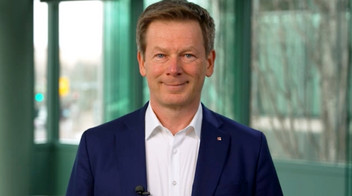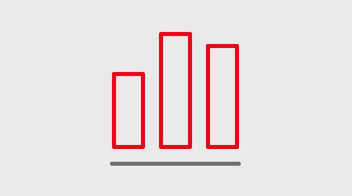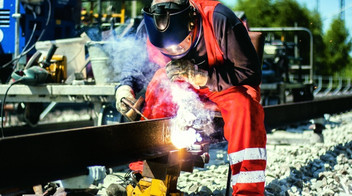Vegetation control on the tracks
For us, both safe rail operations and environmental protection are of outstanding importance. Vegetation control on the tracks has a significant impact on both aspects. In terms of environmental protection, the glyphosate phase-out in Germany is of particular importance to us. At the same time, efficient vegetation control must also be ensured for safety reasons. As of 2023, we no longer use glyphosate and now operate a glyphosate-free rail transport network in Germany. This means that DB Group has consistently implemented its phase-out, which was announced in 2019. Instead, we rely on comprehensive sustainable vegetation management, which provides for a coordinated interaction of various measures. We are also in close discussions with other European railways.
In recent years, we have developed and tested alternative, environmentally friendly procedures and application strategies. Such procedures are currently either not available or are only available to a limited extent. For this reason, in order to ensure safe rail operations, we must also make use of approved alternative herbicides. They are only used selectively on specific sections of the line, while mechanical procedures are used in other areas. In general, only substances that are approved by the Federal Office for Consumer Protection and Food Safety specifically for the track area are used for treatment with chemical procedures.
We continue to work closely with industry and science to drive forward innovative solutions for sustainable vegetation management on the tracks. Vegetation is also continuously monitored in order to enable active management of growing tolerances. In 2023, we won the “AI Innovation Award” from the KI-Bundesverband (German AI Association) and the F.A.Z. Institut for our AI solution BiGEye. (BiG: Bewuchs im Gleis; vegetation on the track). The application supports vegetation control by identifying growth in and on the tracks using machine learning. The aim is to allow vegetation measures to be planned in a targeted and efficient way in the future.
The current mix of measures as part of vegetation control includes the use of digital and mechanical-manual procedures (e.g. digital tools for efficient planning of vegetation control and technologically advanced mowing machines), as well as the use of chemical procedures such as pelargonic acid. Due to the use of a new combination of substances, there is no comparability with the previous year’s figures with regard to the volume of application. The amount of herbicides used in 2023 was 21.4 t. With a track length of about 61,000 km, about 14% (previous year: about 19%) of the tracks was treated. This is equivalent to just under 2.46 kg of herbicide per kilometer of track treated.


